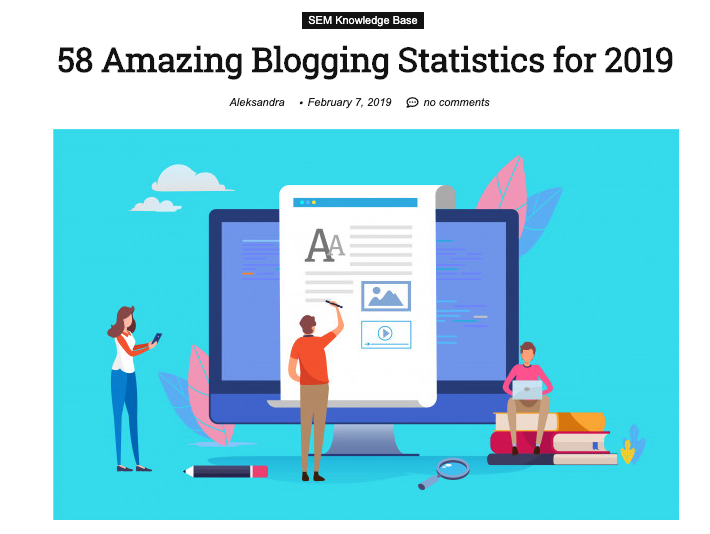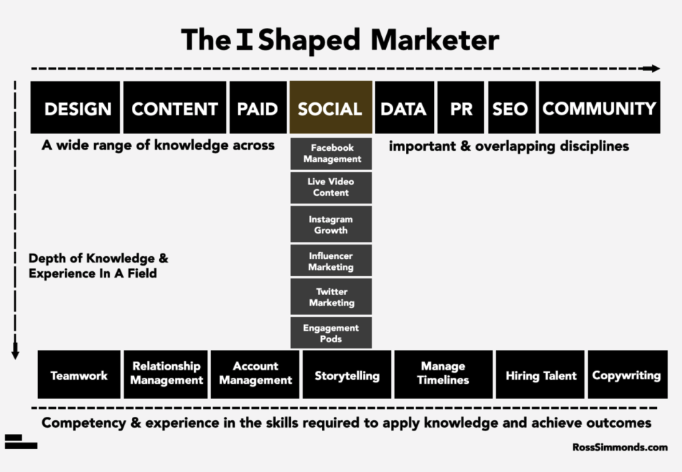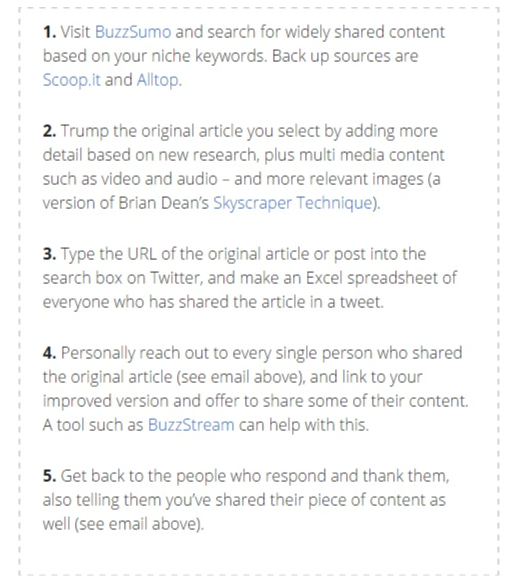11 Outstanding Ways To Extend Your B2B Blog’s Reach



There are lots of helpful articles out there about crafting a blogging strategy, and even more about how to “accelerate your blog’s growth by xx%!” (Because, you know, you’re supposed to use numbers.) I can personally vouch for the fact that there’s a lot out there because I went through it all in the process of reevaluating our own blogging strategy.
Recently, we decided to focus on writing data-driven posts that show how—and how well—growth content works by using real numbers from real clients. (You can check out what I mean here.) But as some of you may already know, data-gathering is no small task, which is why we also started looking for ways to make the most of every post. That led to a full-on research project: What are the best ideas out there for increasing your blog’s reach?
It was an interesting exercise, and so we’re taking a break from our regularly scheduled programming to share what we came up with—a collection of blog promotion ideas that we’re currently trying out. Did we miss one that you use regularly? We would love to hear about it, so tweet us @nectafy and let us know!
Blog Promotion Strategy Ideas We’re Trying
During the course of my research it seemed like ideas were falling into at least one of three buckets:
Bucket 1: Ways to promote our original data posts.
Bucket 2: Ways to craft individual data posts to gain more readership.
Bucket 3: Ways to promote our blog overall.
Listed below are the ideas followed by the bucket(s) that seemed most applicable. It isn’t necessarily super important—after all, they’re working toward the same goal—but it helped us organize our thinking around them and plan out how we might use them by understanding how they fit together.
1 Use the Unicorn Strategy. (2, 3)
Thanks, Larry Kim, for this wonderfully-named blog promotion strategy. The idea behind it is that only a small portion of your content will perform highly, so you should focus on leveraging the power of your company’s best content to drive the majority of your content marketing efforts. How can you determine your best content? It has higher time-on-page stats, a lower bounce/exit rate, and a high click-through rate.
When you find a unicorn—clone it. Promote it more, repurpose it, and spin it, altering the audience, product, or service focus. Promote it on social media and rework it into different forms. Use bits of it and surround it with new context. Basically, reuse and repurpose your best-performing quality content in any way possible. And it’s not just blog posts—you can do this with emails, offers, or any other content.
Don’t have any unicorn content yet? Talk to us about how we can help you create it.
2 Conduct survey posts. (2, 3)
“To learn more about xxx, we asked more than 100 marketers [salespeople, CEOs, etc.] to tell us xxx.” Sound familiar? Lots of blogs utilize surveys to gather data that they then craft into a blog post. (Databox has mastered this blog promotion strategy.) Surveying knowledgeable people about a topic and combining their answers into a blog post is good for two things:
- Your blog post will contain original data that hasn’t been seen before.
- Those who participated in the survey are more likely to share the post with others.
3 Create posts that aggregate data from the Internet. (2, 3)
No one has enough time for anything for research—that’s why people appreciate posts that gather information on a particular topic of interest from around the Web. If you do this well, meaning you get your facts from trustworthy sources and present them with meaningful context, it helps you stay relevant as a source. Posts like these are also ripe for retweeting. (Did you know that 66% of B2B marketers who use blogs generate more leads than those who don’t? Got that from here.)
4 Interview CEOs/authors/experts and turn those interviews into posts. (2, 3)
Again, this blog promotion idea has legs when it comes to enlisting others to help boost readership. If we interview people of interest to our primary personas (B2B CEOs/business founders) who have some kind of a following already, they’ll almost certainly share the post with their audience, broadening our reach. In our case, we might also ask them to share some data, to help keep our posts data-oriented and unique.
5 Ask experts to provide an insightful quote about your blog article topic. (1, 2, 3)
Can’t get someone to do a full interview? Maybe they’ll provide a quote regarding another topic you’re writing about. Not only does it increase the chance of your blog being shared with a wider audience, it also lends credibility to your other posts.

6 Incorporate linkable assets into posts. (1, 2, 3)
A well-done original chart, intriguing image, quote from an influential person (see above) or any other type of interesting asset you can include in a post encourages easy sharing.
7 Create multimedia versions of posts. (1, 2, 3)
Media gets shared more than words, so turn those words into something else, like an infographic.
Or a slideshow (and post it on SlideShare).
Or a video (and post it on YouTube or LinkedIn).
Or create an audio version and share it on SoundCloud. (Neil Patel has some great direction on how to turn blog posts into infographics here, plus places to distribute them to.)
Consider whether your company has a certain philosophy surrounding your work and consider turning it into a custom graphic that can be shared, like Ross Simmonds’ take on the T-Shaped Marketer as an I-Shaped Marketer.
8 Look at communities and niche sites. (1, 2, 3)
Sure you can share posts on Facebook, LinkedIn, and Twitter but those places are crowded and it’s hard to get noticed. Consider instead promoting some of your posts on niche sites—sites where your audience lives and where you might have a better chance of standing out. If your content is stellar, it will be appreciated and eventually pay off.
Beware, however, that this tactic could take time. The only way to do this right is to engage with your chosen niche site’s community for a while, perhaps dropping a link whenever it might be truly relevant to the conversation at hand. Otherwise, you risk putting people off altogether.
9 Target guest-blog partners. (1, 2, 3)
Guest-blogging is a terrific blog promotion idea. This interview with Buffer’s Leo Widrich outlines the company’s guest-blogging strategy in the early days, essentially targeting larger and larger blogs to keep expanding their reach. He emphasizes that a large part of this strategy is around building relationships. So think about what other companies you admire in your space and consider what useful things you can offer them. Maybe explain to readers how using the company’s tool helped you accomplish something important. Try to cultivate four or five partners who you’d really want to work with.
10 Look for places to republish posts that are doing well. (1)
You can also look for guest post opportunities to publish blog posts that are doing well on your own site—without having to rewrite them completely or start an original article from scratch. You’ll need to change 20-25% of the article and choose a new headline; or you may need to turn it into a slide show or infographic before submitting elsewhere. You can get some good ideas about how to go about doing that here.
11 Create some type of regular Q&A posts surrounding your buyer persona’s interests. (2, 3)
For me, it’s always interesting to hear about other people’s experiences: What’s challenging for them? How did they solve x or y? That led me to the idea of partnering with another company that provides a service complementary to ours and doing a regular blog post feature on reader questions, with someone from both companies answering them. They’d promote it, we’d promote it, and our audience would tune in to see what the next question might be—or if maybe their own question was answered.
Other interesting ideas:
- Use the Skyscraper Technique—basically, find specific content from some other source that’s doing really well, then do it better.
- Triple Twitter Traffic Technique—named by Loz James and gleaned from Andrew McCauley, the steps of this technique are described in the image below.
- Capture testimonials and use them for a video—it seems a pretty simple way of creating a useful piece of content (though not necessarily a blog post).
- Create a newsletter to send out for your blog round-up.
There’s a lot of great advice out there—what’s yours? Let us know by leaving a comment below!






